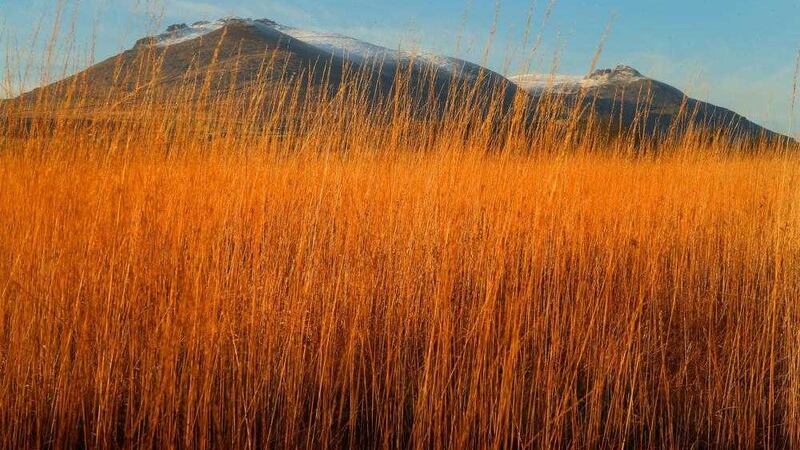IF anyone ever decides to do an outdoor production of Waiting for Godot, a remote spot in the the Mourne Mountains would be the perfect location.
The scene instructions, like much of Samuel Beckett’s writing, are sparse but precise. ‘A Country Road. A Tree. Evening’.
At my outdoor location the road is more of a hiker’s path; however, the tree is perfectly Beckettian – solitary, brooding and gnarled, but firmly rooted in the mountain wilderness.
The audience and cast would have to trek for about an hour from the free car park along the Quarter Road, which runs above and parallel to the coast road between Newcastle and Kilkeel.
It is one of the most accessible routes for hikers into the Mournes, passing Annalong Wood, which was all but destroyed in a forest fire a few summers ago.
The blackened stumps of hundreds of trees lurk in the swirling mist of a January morning. A few clusters of live conifers still survive and last summer there were even signs of green shoots among the blackened branches of some of the damaged trees.
Left of the path is Slieve Binnian, while straight ahead is the looming Slievelamagan and in front of if a small outcrop of rock known as Percy Byssche, in honour of the 19th century English Romantic poet Percy Byssche Shelly.
Past Annalong wood and over a river, running high and fast after the recent downpours, the path steepens as you ascend into the heart of the Mournes. Going straight ahead past Percy Byssche you climb onto a ridge that dips between Slievelamagan and Binnian.
Across a steep valley lies Ben Crom (the Celtic god Crom Cruach was supposedly appeased by human sacrifices). The valley has been flooded to create the Ben Crom Reservoir, which feeds into The Silent Valley, lower down and to the south.
From here you can climb on up to the higher mountains to your left or right, but these require a bit of stamina and the paths aren’t always very well defined.
Backtracking for today – it’s my first mountain walk of 2016 – I come back down to the shores of the Blue Lough, which nestles at the foot of Slievelamagan, for a rest and to inhabit the silence, broken only by the occasional craw of a raven, pecking among the reeds on the other side of the lough.
Continuing on around the back of Percy Byssche the ground gets soggy. This is great foraging territory for bilberries during the spring and summer, although they can be bitter if eaten when freshly picked.
Descending back into the Annalong Valley, the Irish Sea lies straight ahead, while to the left, although invisible today under a cloak of cloud, is Slieve Donard.
A not-too arduous trek will take you along this valley, past the Bog of Donard and upwards for a bracken-clutching climb to the ‘Saddle’ that lies between Donard and Slieve Commedagh and down into Newcastle.
But for now I’m seeking out the tree, lurking somewhere among the rocks and heather. It is a chameleon that slips in and out of perception and can suddenly seem to appear at the exact spot where you were gazing intently a few minutes earlier but saw nothing.
The seed from which it grew must have blown up here from the now scorched forest and taken root, for even in summer there is nothing else growing here above knee height.
I wonder if Beckett saw something similar during his long walks in the Wicklow Mountains when he was a young man and took it as an inspiration for the setting of his most famous play.
I stop and lean against the tree to take in the view – and of course indulge in some existentialist angst.








